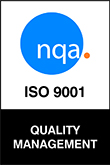Overcoming Challenges for Robust Security
Today, organizations face the persistent challenge of mitigating insider threats. These threats can emerge from malicious insiders or inadvertently through compromised user accounts. To effectively address this risk, organizations must understand the threats, navigate the challenges associated with periodic access reviews, implement robust security measures, and comprehend the consequences of failing to conduct these reviews. This article explores these crucial aspects to provide insights into enhancing insider threat mitigation.
Insider threats pose a significant risk to organizational security. They are particularly dangerous due to several factors. Insiders often act non-maliciously, making it harder to detect harmful activities compared to external attacks. They possess knowledge of an organization’s cybersecurity weaknesses and the location of sensitive data, allowing them to exploit vulnerabilities or act anonymously using others’ user accounts. As a result, insider attacks can lead to devastating consequences for organizations, including financial losses, reputational damage, regulatory non-compliance, and loss of customer trust.
Malicious insiders may exploit their authorized access to sensitive data and systems, while compromised accounts can inadvertently enable unauthorized access. Such threats can result in data breaches, financial loss, reputational damage, and regulatory non-compliance. Organizations must acknowledge these risks to develop effective strategies for mitigating insider threats.
Challenges in Conducting Periodic Access Reviews
Navigating the process of conducting periodic access reviews can present challenges for organizations. Chief Information Security Officers (CISOs) face several obstacles when implementing these reviews, including:
- Resource Allocation: CISOs often encounter resource constraints, including limited budgets, staffing challenges, and time constraints. Allocating resources effectively is essential for successful access reviews. Organizations must invest in access management systems, identity and access management tools, and automated review solutions to streamline the process and reduce manual workload and human errors. Optimizing resource allocation helps ensure comprehensive access reviews without compromising other essential security initiatives.
- Collaboration and Communication: Effective insider threat mitigation requires collaboration and communication across different departments and stakeholders. CISOs play a crucial role in fostering a security awareness and accountability culture. Involving HR, legal, IT, business, and management teams in the access review process promotes a unified approach to identifying and addressing insider threats. Regular communication sessions further enhance the understanding of access control and periodic reviews, reinforcing a collective effort to safeguard against potential risks.
Best Practices for Insider Threat Mitigation
To enhance insider threat mitigation, organizations should adopt the following best practices:
- Automatic Access Risk Monitoring: By implementing such a monitoring process, an organization can ensure that individuals only have access to the resources necessary for their roles and access risk will become visible for every employee and every profile or role in different applications. This approach minimizes the risk of unauthorized access and prevents serious insider incidents.
- Periodic Access Reviews: Conducting regular access reviews is vital to identify the previous errors in role creation/testing, and inappropriate decisions in the acceptance process. As a result, organizations should revoke the discovered unnecessary, conflicting, or excessive privileges. By performing these reviews at defined intervals, organizations can maintain an accurate and up-to-date understanding of user access rights. Automated review solutions can streamline the process, making it more efficient and reliable.
Failing to conduct periodic access reviews can increase the risks associated with insider threats. Without regular evaluations of access privileges, unnecessary access rights may persist, creating a larger attack surface for potential insider threats. This heightens the likelihood of unauthorized data access, modification, or disclosure, leading to severe financial and operational repercussions. Additionally, neglecting access reviews can delay access provisioning, administrative overhead, and compliance violations.
Conclusion
Mitigating insider threats requires organizations to implement robust security measures and understand the consequences of failing to conduct periodic access reviews. By comprehending the risks posed by insider threats, addressing challenges through integration, resource allocation, and collaboration, and adopting best practices like automatic access risk monitoring and periodic reviews, organizations can significantly decrease their security risk level.














